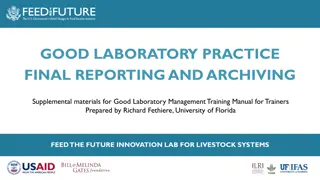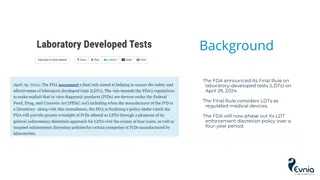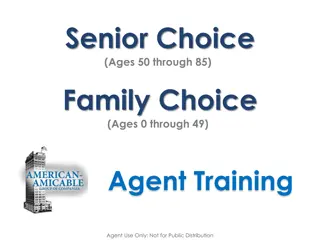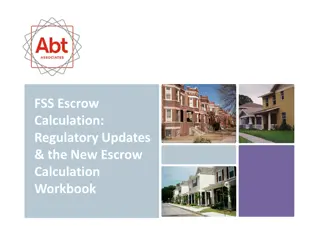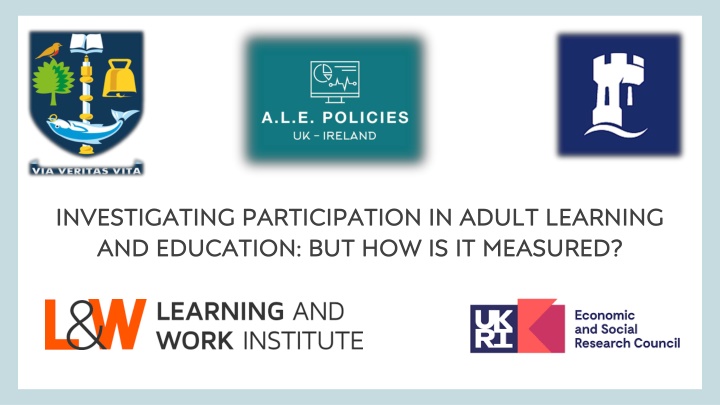
Improving Adult Learning Participation Metrics
Explore how participation in adult learning is measured, the decline in participation rates in the UK, challenges with data reliability, and the importance of evidence-based policymaking for adult education initiatives.
Uploaded on | 0 Views
Download Presentation

Please find below an Image/Link to download the presentation.
The content on the website is provided AS IS for your information and personal use only. It may not be sold, licensed, or shared on other websites without obtaining consent from the author. If you encounter any issues during the download, it is possible that the publisher has removed the file from their server.
You are allowed to download the files provided on this website for personal or commercial use, subject to the condition that they are used lawfully. All files are the property of their respective owners.
The content on the website is provided AS IS for your information and personal use only. It may not be sold, licensed, or shared on other websites without obtaining consent from the author.
E N D
Presentation Transcript
INVESTIGATING PARTICIPATION IN ADULT LEARNING AND EDUCATION: BUT HOW IS IT MEASURED?
ESRC-ALE PROJECT OUTLINE INTRODUCTION TO THE ALE POLICIES PROJECT LEARNING & WORK INSTITUTE APIL SURVEY METHODOLOGY FINDINGS DISCUSSION & CONCLUSION REFERENCES Q&A WITH AUDIENCE 2
INTRODUCTION TO THE A.L.E POLICIES PROJECT
WHY THIS PROJECT? ESRC ALE PROJECT Participation rates in ALE in the United Kingdom have been decreasing throughout the 2000s and 2010s. The number of publicly funded qualification routes started by adults in the UK declined by 70%, dropping from nearly 5.5 million qualifications to 1.5 million by 2020 (Tahir, 2023). Total participation in further education and skills in 2021/22 decreased by 23.2% compared to 2016/17 (Skills Funding Agency & Department for Business, Innovation and Skills, 2023). According to the Adult Participation in Learning (APiL) survey of the UK s Learning and Work Institute (L&W, formerly NIACE, 2023), adult participation rates in learning dropped by 13% to 33% in 2019. 4
WHY THIS PROJECT? ESRC ALE PROJECT Use of Fuzzy concepts: Use of Fuzzy concepts: lack of consensus on definition adult education, ongoing use of triadic typology of formal, non-formal, informal Potential lack of reliability of survey results: Potential lack of reliability of survey results: Widany et al. (2019) demonstrated fluctuations in determinants of participation dependent on data source in Germany, data quality concerns Lack of insights in trends over time: Lack of insights in trends over time: desire to investigate fluctuations in participation rates in relation to critical junctures such as economic downturns, policy changes, COVID, Need to unpack devolved ALE discourses Need to unpack devolved ALE discourses: : ALE policies as responsibility of devolved governments in UK, need to engage in home-international comparisons Situation of data deserts: Situation of data deserts: availability of data uneven across the UK, e.g. PIAAC Cycle 2 only England, implications for evidence-based policymaking 5
PARTICIPATION RATES AS PUBLISHED IN THE PUBLIC DOMAIN ESRC ALE PROJECT Graph 1: Graph 1: The rates of participation in ALE by APiL, PIAAC, AES and LFS (Desjardins, 2015, p. 5; DfE, 2018, p. 11; L&W, 2023; NISRA, 2023) 6
THE FOCUS OF EVIDENCE-BASED POLICYMAKING ESRC ALE PROJECT The process of taking scientific evidence into account while designing or revising policy (Goodvin & Lee, 2017) to use what is already known from research to design policies to build more knowledge to better inform future decisions (Kennedy, 2022) Efficiency A key factor in evidence-based policymaking is the nature used. The source of the evidence should have credibility, scientific rigour, relevance, independence(Goodvin & Lee, 2017) nature of the evidence being 7
ESRC-ALE PROJECT PROJECT OBJECTIVES A UK-Ireland Investigation into the Statistical Evidence- Base Underpinning Adult Learning and Education Policymaking project The primary aims of the project are: 1. 1. to investigate the nature and consistency of the current statistical to investigate the nature and consistency of the current statistical evidence evidence- -base on ALE across the UK and Ireland, base on ALE across the UK and Ireland, 2. to understand the decline in participation in ALE against economic, societal, and political changes, 3. and to understand how policymakers make use of the current statistical evidence-base in their decision-making. Funded by the Economic and Social Research Council (ESRC) of the UK. The first aim of the project was designed to dig deeper into the conceptual jungle of terms like adult education adult education versus learning and training the various operationalisations operationalisations that are used to measure these concepts to inform policymakers inform policymakers about the nature of the evidence underpinning ALE. learning and training , and to 8
LEARNING & WORK INSTITUTE APIL SURVEY
LEARNING AND WORK INSTITUTE ESRC ALE PROJECT L&W was formed in 2016 from a merger between the National Institute of Continuing Education and the Centre for Economic and Social Inclusion Independent policy, research and development organisation Priority areas: Lifelong learning Employment and social security Essential and life skills Pay, progression and job security Apprenticeships and technical education Social justice and inclusion 10
ADULT PARTICIPATION IN LEARNING SURVEY ESRC ALE PROJECT The Adult Participation in Learning Survey was launched by NIACE in 1996. Development prompted by lack of existing adult learning surveys and adult learning data. Longest running and most frequently occurring study of adult learning across the UK. In early 2000s NIACE worked with DfE to establish an adult learning participation target, informed by the survey results. The survey also informed the development of DfE s National Adult Learner Survey 11
METHODOLOGY ESRC ALE PROJECT Learning can mean practising, studying or reading about something. It can also mean being taught, instructed or coached. This is so you can develop skills, knowledge, abilities or understanding of something. Learning can also be called education or training. You can do it regularly (each day or month) or you can do it for a short period of time. It can be full time, or part time, done at home, at work, or in another place like a college. Learning does not have to lead to a qualification. We are interested in any learning you have done, whether or not it was finished. 12
METHODOLOGY ESRC ALE PROJECT Each year, the survey includes: Core questions asked every year Standard questions which have been asked for a number of years Additional, topical questions funded by our research partners Core questions Core questions Current or recent participation in learning Future intentions to learn Standard questions Standard questions Main reason for learning Motivation for learning Methods of learning Benefits of learning Barriers to learning (for both learners and non-learners) Yearly reports published on L&W s website 13
LONG TERM TRENDS ESRC ALE PROJECT The participation in learning rate generally hovers around 40% of adults The findings consistently show that learners are more likely to: Be younger Be in a higher socioeconomic grade Be closer to the labour market Be closer to previous learning Over half of learners say that they learn for their work or career Learners identify a range of wider motivations, benefits and barriers to learning 14
2023 SURVEY RESULTS ESRC ALE PROJECT 2023 survey showed the highest ever rate of participation in learning 60% 49% 50% 46% Increase in participation has not been evenly distributed 44% 43% 42% 42%42%42% 42% 40%41% 41% 40% 39%38% 38%39% 39%38%38%38% 40% 37% 35% 33% 30% Regional analysis indicates an increasing gap between highest and lowest performing regions 20% 10% Continuing impact of characteristics such as age, social grade and labour market status on likelihood of learning 0% 72% of adults who want to change career say they need to develop their skills to do so 15
INTERACTIVE CHARTS ESRC ALE PROJECT In 2018 we developed and published a set of interactive charts to enable exploration of the survey trend data. The charts are updated each year upon publication of the survey. Six charts focused on core and standard questions: Rates of adult participation in learning Likelihood of future learning Methods of learning Motivations for learning Benefits of learning Barriers to learning Thematic groupings do not 100% match those used in the survey reports 16
WHAT ARE THE REASONS BEHIND THESE VARYING PARTICIPATION RATES?
TOTAL SURVEY ERROR PARADIGM ESRC ALE PROJECT Measurement errors can stem from the validity issues pertaining to the construct that is being measured and processing errors. They can also be caused by the respondents (i.e. providing false information), interviewers, ambiguous wording of the survey questions and various interview factors (Biemer, 2010). Representation errors can occur due to the insufficient coverage of the target population, sampling errors, nonresponse errors and adjustment errors (Widany et al., 2019). Figure 1: Figure 1: Total Survey Error paradigm (Groves et al., 2004, as cited in Groves and Lyberg, 2010, p. 856) 18
ESRC ALE PROJECT OBJECTIVES The research questions for WP WP1 1 are as follows: 1. What are the methodological differences in four participation in ALE from UK nations? four major major surveys surveys that collect data on 2. To what extent do the definitions, across four different surveys (APiL, PIAAC, AES, and LFS) that collect data from UK nations, and how do they map onto concepts of formal, nonformal, and informal learning? definitions, concepts, concepts, and and measurements measurements related to ALE differ 19
METHODOLOGY ESRC ALE PROJECT Four major survey questionnaires were scrutinised by text Content analysis sees data as communications that are created and disseminated to be seen, read, interpreted, enacted, and reflected upon according to the meanings they have for their recipients (Krippendorff, 2018, p. xii) The survey documents related to PIAAC, AES, and LFS were obtained from their websites. The documents related to the APiL survey were provided to us by the Learning & Work Institute. text- -based content analysis based content analysis. Following the steps proposed by Zhang and Wildemuth (2009), we: prepared the data files, defined the units of analysis (questions relating to participation in ALE) developed a comparative coding scheme, coded all the data based on the formal, nonformal, and informal definitions of the International Standard Classification of Education (ISCED) 2011 (UNESCO, 2012), ensured the consistency of the codes and located them under themes of formal, nonformal and informal learning. 21
BACKGROUND INFORMATION ABOUT THE SELECTED SURVEYS ESRC ALE PROJECT The Adult Participation in Learning (APiL) Survey Adult Participation in Learning (APiL) Survey by Learning & Work Institute The APiL has been conducted annually since 1996, with exceptions in 1997, 1998, 2000, 2001, and 2016. Around 5000 participants from the four UK nations The background questionnaire of the Programme for the International Assessment of Adult Programme for the International Assessment of Adult Competencies (PIAAC) Competencies (PIAAC) survey of the OECD in 2012 Adult Education Survey (AES) Adult Education Survey (AES) of Eurostat in 2016 the most recent AES wave Waves in 2007, 2011, 2016. UK did not participate in the wave in 2022. Wave in 2016 also functioned as the previous National Adult Learning Surveys (NALS) of the Department for Education and Skills of the UK. Labour Force Survey (LFS) Labour Force Survey (LFS) of ONS LFS in the UK is managed by the Social Surveys Division of the Office for National Statistics (ONS) in Great Britain and by the Central Survey Unit of the Northern Ireland Statistics and Research Agency (NISRA) in Northern Ireland. 22
1. THE COMPARISON OF THE METHODOLOGICAL APPROACHES ADOPTED BY THE FOUR SURVEYS ESRC ALE PROJECT APIL APIL PIAAC PIAAC 2012 AES AES 2016 LFS LFS 2022 The version used in the analysis Year of initiation Sponsorship 2012, 2017 & 2022 (Round1/2011-2012) 2011 OECD 1996 2007 Eurostat 1973 L&WI previously NIACE The Office for National Statistics (ONS) CAPI (until 2020) CATI (since 2020) Mode of data collection CAPI (1996-2019) CATI (2020) CAWI (since 2021) Aged 17+ CAPI CATI Target population Aged 16-65 Aged 19-24 (not in fulltime education) 25 and over England Aged 15+ Coverage of the UK nations England Wales Scotland N. Ireland England N. Ireland England Wales Scotland N. Ireland 24
1. THE COMPARISON OF THE METHODOLOGICAL APPROACHES ADOPTED BY THE FOUR SURVEYS ESRC ALE PROJECT APIL APIL PIAAC PIAAC AES AES LFS LFS Sample size Around 5000 Eng. 5131 N. Ir. - 3761 Eng. 8822 Around 100.000 Sampling method 2011 Census small area statistics Postcode Address File Eng.- Royal Mail list of postal sectors, 2011 N. Ire. NI(POINTER) database, 2011 Eng.: Using ONS LFS sampling framework, Three age strata (19-24, 25-64, 65+) Office Statistics (ONS) sampling framework Rotational design (5 age strata) for National and the sampling Frequency of data collection Yearly (except for 1997, 1998, 2000, 2001 and 2016) Current learning and 3 years Every 10 years Varying (4-6 years) 4 times per year (since 1992) Reference of time for learning 12 months Both 3 years and 12 months Both 3 months and 4 weeks 25
2. THE DEFINITIONS, CONCEPTS AND MEASUREMENTS RELATED TO PARTICIPATION IN ALE ACROSS THE FOUR SURVEYS ESRC ALE PROJECT PIAAC PIAAC 2012 Ongoing FEd & FEd in the last 12 months 2012 AES AES 2016 2016 Ongoing FEd & FEd in the last 12 months LFS LFS 2022 2022 Ongoing FEd & FEd in the last 3 months and 4 weeks APiL APiL Current learning and any learning in the past 3 years Formal Formal education education (FEd) (FEd) On-the-job training, seminars, workshops, courses, private lessons, distance education (formal or nonformal) in the last 12 months Taught courses, supervised training, adult classes, evening tuition, seminars, workshops in the last 3 years and 12 months Job-related learning (formal or nonformal) in the last 3 months and 4 weeks. Taught classes, on-the-job/ off-the job training, tuition, taught classes in the last 3 months. Current learning and any learning in the past 3 years Nonformal Nonformal education education (NFEd (NFEd..) ) education classes, Deliberate learning in various places from various sources via various means in the last 3 years and 12 months Self-learning in the last 3 months and 4 weeks Current learning and any learning in the past 3 years Informal Informal learning learning (INFL) (INFL) No 26
2. THE DEFINITIONS, CONCEPTS AND MEASUREMENTS RELATED TO PARTICIPATION IN ALE ACROSS THE FOUR SURVEYS ESRC ALE PROJECT No No Questions Questions Reference Reference period periodTypes Types of of ALE ALE APiL APiL 1 Learning can mean practising, studying, or reading about something. It can also mean being taught, instructed or coached. This is so you can develop skills, knowledge, abilities or understanding of something. Learning can also be called education or training. You can do it regularly (each day or month) or you can do it for a short period of time. It can be full-time or part-time, done at home, at work, or in another place like college. Learning does not have to lead to a qualification. We are interested in any learning you have done, whether or not it was finished. Which of the following statements most applies to you? 01: I am currently doing some learning activity now 02: I have done some learning activity in the last 3 years 03: I have studied\learnt but it was over 3 years ago 04: I have not studied\learnt since I left full time education 05: Don t know/ Refuse to answer Current & The last 3 years Formal, nonformal, informal learning 27
2. THE DEFINITIONS, CONCEPTS AND MEASUREMENTS RELATED TO PARTICIPATION IN ALE ACROSS THE FOUR SURVEYS ESRC ALE PROJECT Survey Survey No PIAAC PIAAC 2012 2012 No 1 2 Questions Questions Are you currently studying for any kind of formal qualification? During the last 12 months, have you studied for any formal qualification, either full- time or part-time? During the last 12 months, have you participated in courses conducted through open or distance education? Reference Reference period Current The last 12 months Formal education period Types Types of of ALE Formal education ALE 3 The last 12 months Formal Formal or or nonformal or or distance distance education nonformal open education open 4 During the last 12 months, have you attended any organized sessions for on-the-job training or training by supervisors or co-workers? The last 12 months Nonformal education (on- the-job training, training by supervisors or co- workers) 5 During the last 12 months, have you participated in seminars or workshops? The last 12 months Nonformal education (seminars or workshops) 6 During the last 12 months, have you participated in courses or private lessons, not already reported? The last 12 months Nonformal education private (courses lessons) or 28
2. THE DEFINITIONS, CONCEPTS AND MEASUREMENTS RELATED TO PARTICIPATION IN ALE ACROSS THE FOUR SURVEYS ESRC ALE PROJECT No No 1-2 Questions Questions If If you you think During During the 1. Worked towards or completed a qualification? 2. Worked towards or completed a formal apprenticeship at any level (including trade/advanced/foundation/ modern apprenticeships) which will lead or led to a qualification? 3. Been on any taught courses designed to help you develop skills that you might use in a job? 4. Received any supervised training while you were actually doing a job. By this I mean when a manager or experienced colleague has spent time with you helping you learn or develop skills as you do specific tasks at work? 5. Attended any adult education classes, including evening classes? 6. Attended any courses or received any instruction or tuition in driving, playing a musical instrument, in an art or craft, a sport or any other practical skill? 7. Learnt from a package of materials provided by employer, college, commercial organisation or training provider? 8. Been on any other taught course or received any other instruction or tuition in anything, for example attending a workshops or seminars? 9. None of the above? Reference Reference period The last 3 years/ The last 12 months period Types Types of of ALE 1. Formal education 2. Formal education (apprenticeship) 3. Formal or nonformal job 3. Formal or nonformal job- - related training related training 4. Nonformal education (supervised training) 5. Nonformal education (adult education and evening classes) 6. Nonformal education (psychomotor domain) 7. Nonformal or informal 7. Nonformal or informal learning learning 8. Nonformal education (instruction, tuition, workshops or seminars) ALE AES AES 2016 2016 think about the last last 12 about the 12 months, months, that the last last 3 3 years, that is, is, since years, that that is is since since .. ..,, have since ,, have have you you ? ? have you you... ...? ? / / 29
2. THE DEFINITIONS, CONCEPTS AND MEASUREMENTS RELATED TO PARTICIPATION IN ALE ACROSS THE FOUR SURVEYS ESRC ALE PROJECT No No 3-4 During During the have have you time time to to improve / / If If you you think deliberately deliberately tried improve improve your 1. Learning from a family member, friend or colleague 2. Learning by using printed material such as books or magazines 3. Learning using a computer, tablet or smartphone (either online or offline) 4. Learning through watching television, dvd or blu-rays or listening to the radio 5. Learning by taking guided tours of museums, historical, natural or industrial sites 6. Learning by visiting libraries or other learning resource centres 7. None of these Questions Questions Reference Reference period The last 3 years/ The last 12 months period Types Types of of ALE Informal learning in the last 3 years (through a wide range of people, materials, places, and technology) ALE AES 2016 the last you deliberately deliberately tried improve your last 12 12 months, months, apart tried to to learn your knowledge knowledge or or skills apart from learn anything anything at at work skills through from the the activities activities mentioned work or or during through the the following mentioned earlier, during your following means earlier, your free means... ... free think about tried to to learn your knowledge knowledge or or skills about the the last learn anything anything at at work skills through last 3 3 years years instead, instead, that work or or during through ... ... that is is since during your since ,, have your free free time have you time to to you 30
2. THE DEFINITIONS, CONCEPTS AND MEASUREMENTS RELATED TO PARTICIPATION IN ALE ACROSS THE FOUR SURVEYS ESRC ALE PROJECT No No Questions Questions 1 Are you currently working or studying towards any qualifications? Reference Reference period Current period Types Types of of ALE Formal education ALE LFS LFS 2022 2022 2 Are you on a full or part-time course, a medical or nursing course, a sandwich course, or some other kind of course? 3 In the 3 months since [date] have you taken part in any education or any training connected with your job or a job that you might be able to do in the future (including courses that you have told me about already)? 4 And did you take part in any of that education or training in the 4 weeks ending Sunday the [date]? 5 May I just check, in the last 3 months, beginning [date], has your (previous or current) employer offered you any training or education either on, or away from, your job? 6 (Other than the learning, studying and work-related training you have already told me about) During the last 3 months have you received any other tuition or attended any other taught classes, for work or for yourself? 7 During the last 3 months have you taken part in any other learning activities that did not involve taught classes, such as self-learning? 8 Did you take part in any of this learning that did not involve taught classes in the last 4 weeks? Current Formal education The last 3 months Formal Formal education education (job or or (job- -related) related) nonformal nonformal The last 4 weeks Formal Formal education education (job or or (job- -related) related) nonformal nonformal The last 3 months Nonformal education (on- the-job or off-the job) The last 3 months Nonformal education (either job-related or not) The last 3 months Informal learning The last 4 weeks Informal learning 31
2. THE DEFINITIONS, CONCEPTS AND MEASUREMENTS RELATED TO PARTICIPATION IN ALE ACROSS THE FOUR SURVEYS ESRC- ALE PROJECT Deviation Deviation from formal nonformal informal learning typology and from each other Dependency Dependency on respondents understanding of what counts as learning Ambiguity Ambiguity LFS (some kind of other course) & PIAAC (open or distance education) Richness in clues/probes Richness in clues/probes AES (more probes could have been included.) Lack of sufficient number of probes Lack of sufficient number of probes all four surveys (adult education classes, evening classes, videos, apps, podcasts etc.) 32
DISCUSSION & CONCLUSION
MAIN OBSERVATIONS ESRC ALE PROJECT Our text-based content analysis on the four major ALE surveys indicated that there were substantial differences differences among all four surveys in terms of how they conceptualise and measure underlying cause behind the substantially varying participation rates. substantial conceptualise and measure ALE, which can be the differences in methodological approaches: reliance on distinctive data collection methods such as CAWI or CAPI need for future research on best ways to capture reliable data use of different reference periods to capture participation ranging from 4 weeks to 3 years, issue of recall problems among respondents participation in ALE typically not on a daily basis differences in operationalisation of the participation concept role of context-based questions and probes, e.g. AES versus APiL how do respondents understand learning? role of more structured qualification routes? debates on mapping of questions onto formal, non-formal, informal learning 34
REFLECTIONS ESRC ALE PROJECT Surveys like APiL, AES and PIAAC are most specialised ALE data sources but are all cross further exploration through longitudinal longitudinal work work (e.g. Understanding Society) cross- -sectional sectional, need for Use of different data collection methods and operationalisation of concepts leads to incomparable makes it difficult to undertake trend analyses current project phase on APiL incomparable data data and Recommendation for future streamlining of surveys with options for data data data data linkages linkages, also with administrative administrative Exploration of alternatives to survey research, for example randomised and the use of Artificial Artificial Intelligence Intelligence randomised controlled controlled trials trials, big big data data research research How do data quality issues jeopardise effective evidence How do data quality issues jeopardise effective evidence- -based policymaking? based policymaking? Focus of next project phase! 35
REFERENCES USED FOR THIS WORK ESRC ALE PROJECT Beblavy, M., Thum, A. E., Potjagailo, G. (2014). Learning at every age? Life cycle dynamics of adult education in Europe. Studies in Continuing Education, 36(3), 358-379. https://doi.org/10.1080/0158037X.2014.918537 Biemer, P. (1988). Measuring Data Quality. In R. Groves, P. Biemer, L. Lyberg, J. Massey, W. Nicholls & J. Waksberg (Eds.), Telephone Survey Methodology (pp.273-282). John Wiley & Sons. Bipartisan Policy Center. (2018). Evidence-based policymaking primer. https://bipartisanpolicy.org/report/evidence- based-policymaking- primer/ Boeren, E. (2014). Evidence-based policy-making: The usability of the Eurostat Adult Education Survey. International Journal of Lifelong Education, 33(3), 275-289. https://doi.org/10.1080/02601370.2014.891887 Boeren, E. (2016). Lifelong Learning Participation in a Changing Policy Context: An Interdisciplinary Theory. Palgrave Macmillan. Campanelli, P., and Channell, J. (1994). Training. An Exploration of the Word and the Concept With an Analysis of the Implications for Survey Design (Research Series, no. 30). Sheffield: Research Strategy Branch, Employment Department. de Leeuw, E. D., and van der Zouwen, J. (1988). Data quality in telephone surveys and face-to-face surveys: A comparative meta-analysis. In R.Groves, P. P. Biemer, L. Lyberg, J. Massey, W. Nicholls & J. Waksberg (Eds.), Telephone Survey Methodology (pp. 283-299). John Wiley & Sons. Department for Education. (2018). Adult https://assets.publishing.service.gov.uk/media/5b19556740f0b634c6141333/Adult_Education_Survey_2016_research_report.pdf Desjardins, R. (2015). Participation in adult education opportunities: evidence from PIAAC and policy trends in selected countries background paper prepared for the Education for All Global Monitoring Report 2015. Los Angeles: University of California. D rnberger, A., Drasch, K., and Matthes, B. (2010). Kontextgestu tzte Abfrage in Retrospektiverhebungen. Ein Kognitiver Pretest zu Erinnerungsprozessen bei Weiterbildungsereignissen. IAB-Discussion Paper, No. 20/2010. http://doku.iab.de/discussionpapers/2010/dp2010.pdf European Parliamentary Research Service. (2023). Lifelong Learning in the EU. Education Survey 2016: Research Report. 36
ESRC ALE PROJECT Eurostat. (2023a). EU Labour Force Survey: Description of the data collection. https://ec.europa.eu/eurostat/web/microdata/european-union- labour-force-survey#:~:text=The%20EU%20labour%20force%20survey,Trade%20Association%20(EFTA)%20countries. Eurostat. (2023b). Adult Education Survey (AES) methodology. https://ec.europa.eu/eurostat/statistics- explained/index.php?title=Adult_Education_Survey_(AES)_methodology#Introduction Felstead, A., Green, F., and Mayhew, K. (1997). Getting the Measure of Training. A Report on Training Statistics in Britain. Leeds: Centre for Industrial Policy and Performance; University of Leeds. Goodvin, R., & Lee, S. C. (2017). Promises and pitfalls of evidence-based policymaking: observations from nonpartisan legislative policy research institute. Psychology, Public Policy, and Law, 23(4), 490-502. http://dx.doi.org/10.1037/law0000145 Groves, R. M., and Lyberg, L. (2010). Total survey error: Past, present and future. Public Opinion Quarterly, 74(5), 849 879. Hall, S., Jones, E., Evans, S. (2023). Adult Participation in Learning Survey 2023. Learning and Work Institute. https://learningandwork.org.uk/resources/research-and-reports/adult-participation-in-learning-survey-2023/ Hall, S., Jones, E., Evans, S. (2021). Adult Participation in Learning Survey 2021. Learning and Work Institute. https://learningandwork.org.uk/resources/research-and-reports/adult-participation-in-learning-survey-2021/ Hillage, J., Uden, T., Aldridge, F., & Eccles, J. (2000). Adult Learning in England: A Review. IES Report 369. Grantham Book Services. Jackson, H., Young, N. A., & Taylor, D. (2021). Beyond question wording: How survey design and administration shape estimates of disability. Disability and Health Journal, 14(4), 101115. Kennedy, D. (2022). Research and policy: A three-way intersection (Part 1 of 3). Adult Literacy Education, 4(2), 44-50. Krippendorff, K. (2018). Content analysis: An introduction to its methodology. Sage. Kuper, H., Behringer, F., and Schrader, J. (ed.). (2016). Development of indicators and a data collection strategy for further training statistics in Germany. Bonn: Bundesinstitut fu r Berufsbildung. https://www.bibb.de/veroeffentlichungen/de/publication/show/8101 37
ESRC ALE PROJECT Ladini, R., & Biolcati, F. (2023). Ambiguity in the item wording, ambiguity in the respondents comprehension? An experiment on the immigrants/foreign workers social distance item in values surveys. Survey Research Methods, 17(1), 63-74. Learning and Work Institute. (2023). Rates of adult participation in learning. https://learningandwork.org.uk/what-we-do/lifelong- learning/adult-participation-in-learning-survey/rates-of-adult-participation-in-learning/ Link, M. W., and Mokdad, A. H. (2005). Effects of survey mode on self-reports of adult alcohol consumption: A comparison of mail, web and telephone approaches. Journal of Studies on Alcohol, 66(2), 239-245. Martin, E. (2006). Survey questionnaire construction. Research Report Series (Survey Methodology #2006-13). Director s Office U.S. Census Bureau Washington, D.C. 20233. https://www.census.gov/content/dam/Census/library/working-papers/2006/adrm/rsm2006-13.pdf McGivney, V. (2003). Match or mismatch: do the findings reflect the qualitative evidence? In N. Sargant & F. Aldridge (Eds.), Adult Learning and Social Division: A Persistent Pattern (Vol. 2), (pp. 92-99). NIACE. Northern Ireland Statistics and Research Agency (NISRA). (2023). National statistics: Highest qualification and participation in education and training 2022. https://www.nisra.gov.uk/publications/highest-qualification-level-2022 OECD. (2010). PIAAC Background questionnaire MS version 2.1 d.d. 15-12-2010. https://www.oecd.org/skills/piaac/Background%20Questionnaire%2015DEC10.pdf OECD. (2016a). Technical Report of the Survey of Adult Skills (PIAAC) (2nd ed.). https://www.oecd.org/skills/piaac/PIAAC_Technical_Report_2nd_Edition_Full_Report.pdf OECD. (2016b). The Survey of Adult Skills: Reader s Companion, Second Edition, OECD Skills Studies, OECD Publishing, Paris. https://www.oecd.org/publications/the-survey-of-adult-skills-9789264258075-en.htm Office for National Statistics. (2022a). LFS User Guides. 2022 Update: Volume 1: Background and Methodology. https://www.ons.gov.uk/employmentandlabourmarket/peopleinwork/employmentandemployeetypes/methodologies/labourforcesurveyuserguida nce#2022-update 38
ESRC ALE PROJECT Office for National Statistics. (2022b). LFS User Guides. 2022 Update: Volume 2: LFS Questionnaire. https://www.ons.gov.uk/employmentandlabourmarket/peopleinwork/employmentandemployeetypes/methodologies/labourforcesurveyuserguida nce#2022-update Owusu-Agyeman, Y. (2019). An analysis of theoretical perspectives that define adult learners for effective and inclusive adult education policies. International Review of Education, 65(6), 929-953. Popovic, K. (2010). Methodological aspects of surveys on participation in adult education and learning. Andrago ke Studije, 1, 35-46. Powell, R., Smith, R., & Reakes, A. (2003). Defining common issues across Europe for adult education. Slough: National Foundation for Educational Research. https://www.direitodeaprender.com.pt/elwaweb/doc_bin/Research%20Reports/DEFINING%20COMMON%20ISSUES%20ACROSS%20EUROPE%20F OR%20ADULT%20EDUCATION.pdf Ronsenbladt, B. (2010). Adult education and training in comparative perspective understanding differences across countries. Statistics in Transition, 11(3), 465-502. Skills Funding Agency & Department for Business, Innovation and Skills. (2023). Further education and skills. https://explore-education- statistics.service.gov.uk/find-statistics/further-education-and-skills/2021-22 Tahir, I. (2023). Investment in Training and Skills. Institute for Fiscal Studies. https://ifs.org.uk/sites/default/files/2023-10/IFS-Green-Budget- 2023-Investment-in-training-and-skills.pdf Widany, S., Christ, J., Gauly, B., Massing, N., & Hoffmann, M. (2019). The quality of data on participation in adult education and training. An analysis of varying participation rates and patterns under consideration of survey design and measurement effects. Frontiers in Sociology, 4, 71. Zhang, Y. and Wildemuth, B. M. (2009). Qualitative analysis of content. In B.M. Wildemuth (Ed.), Applications of Social Research Methods to Questions in Information and Library (pp. 1-12). Libraries Unlimited. 39
Q&A WITH AUDIENCE PRESENTERS: PROFESSOR ELLEN BOEREN, DR CORIN EGGLESTONE, DR. BETUL BABAYIGIT Q&A FACILITATOR: DR SHARON CLANCY

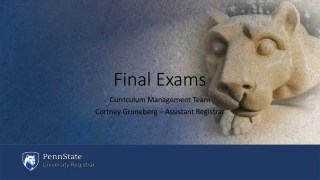
![READ⚡[PDF]✔ Yup I'm Dead...Now What? The Deluxe Edition: A Guide to My Life Info](/thumb/20463/read-pdf-yup-i-m-dead-now-what-the-deluxe-edition-a-guide-to-my-life-info.jpg)



